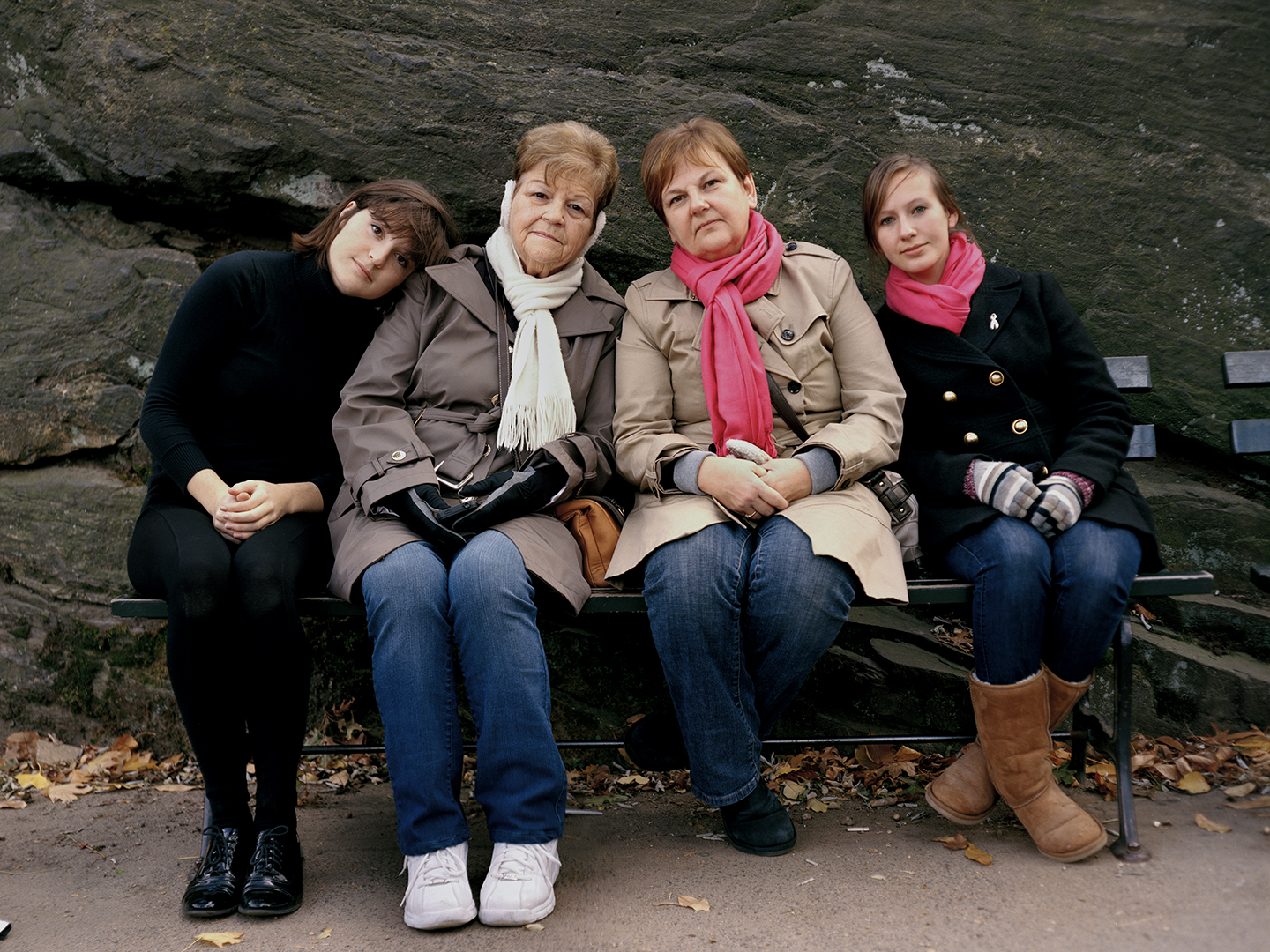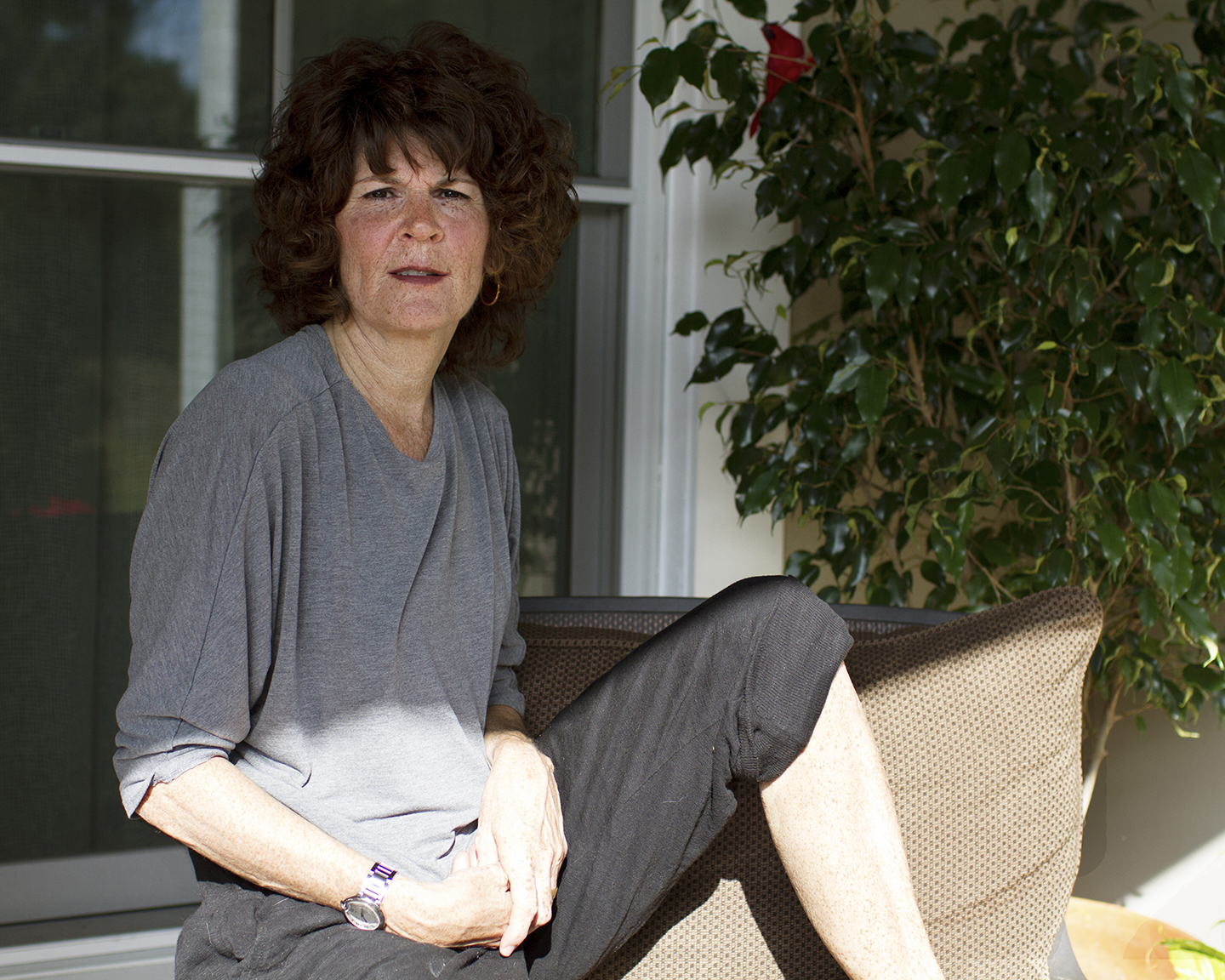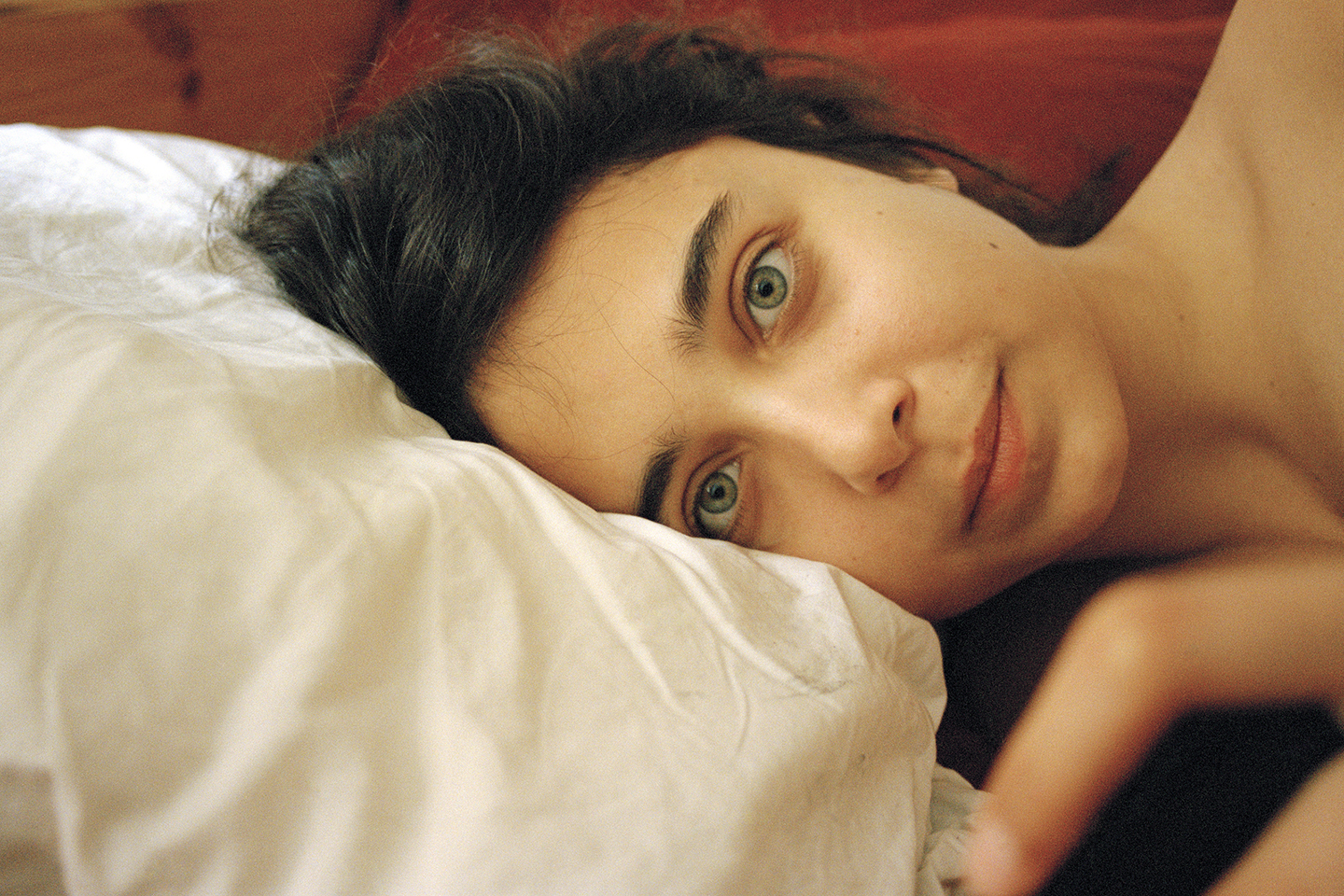Kat Shannon’s You Belong Where You Are
This week I spoke with Kat Shannon about her ICP-Bard MFA solo thesis show You Belong Where You Are.
Liz Sales: Congratulations on a wonderful thesis show!
Kat Shannon Thank you so much! And thank you for coming by!
L.S. Is your exhibition title, You Belong Where You Are, a nod to the book, No One Belongs Here More Than You by Miranda July?
K.S. I cannot deny the influence both of Miranda July and certainly of her title in coming up with my own, but the direct inspiration for the title came from an experience in Savannah, GA, where I studied as an undergraduate. There was a small painted portrait by my local grocery store there that said “DO YOU BELONG WHERE YOU ARE?” and I would notice it every day. In the years since, that phrase has always stuck with me, and in coming up with my title it felt most appropriate. I dropped the “do” and decided to make it a declarative statement to give it more power and authority.
L.S. The title speaks to the work. You seem to use art as an occasion for validation and intimacy. Is that a fair read?
[vimeo 118150844 w=500 h=281]
Ana and I sharing an apple from Kat Shannon on Vimeo.
K.S. Yes, totally. I started experimenting with video at the beginning of graduate school at ICP-Bard. It was a new way to explore. It helped me close in on subjects I’m interested in, and intimacy was definitely one of them
L.S. What are some of the others?
K.S. Loneliness, longing, vulnerability, personal exchange.
L.S. Right, like in Single you and a man sit on a bed, facing each other, singing along to a song in earnest. What do you gain from these encounters?
K.S. That video was the first in an ongoing project. It helped set the tone for the overall experience I was creating with my work. My classmate, Matt, chose his favorite love song and I memorized the lyrics so we could sing it to each other. The moment was so intense in our commitment and sincerity to each other. It became a really lovely mutual exchange of catharsis.
[vimeo 88125541 w=500 h=281]
Single from Kat Shannon on Vimeo.
L.S. What compels you to document and share these moments?
K.S. In documenting them and sharing them I have the chance for a new way of analyzing the exchange. And I think many of my videos are humorous but people don’t really know whether they’re allowed to laugh. They balance a thin line between comfort and discomfort–I really like this.
L.S. Who are you singing Young and Foolish with?
K.S. Young and Foolish is sung with a man named Paul Kessel. He is an active member in ICP’s continuing education program, so we met through a mutual class there. Both he and Matt were nearly complete strangers to me when I asked them to participate in this project with me; now I am close friends with them both.
L.S. Did you chose these people because you wanted the opportunity to get closer to them?
K.S. Hmm, I hadn’t considered this when initially asking them, but I have no doubts that there was at least a subconscious attraction to that idea. I felt I could trust that they would enjoy this project, that they could approach it earnestly with me.
And I was right, I had a wonderful time with them both. It was very moving for me to be invited to their spaces and offered the chance to sing their prospective songs with them.

L.S. As someone who works in both still photography and video, do you automatically know which medium a project is destined for?
K.S. Something will hit me as an idea for a video or a photograph, and it’s only afterwards that I will consider how it could work the other way. I’ve been working with photography for so long that it seems more intuitive somehow. In that sense, when I’m making videos I’m much more organized and specific because I feel I have to be.
I think the show was actually the first opportunity I had to finally work out the relationship between my photographic and video work. I was able to see the conceptual overlap in new ways, which helped dig into my process of learning about how I make work.
L.S. Could you talk a bit about the photographic work in the show? It is a mix of images of family members and strangers?
K.S. It was a mix. I showed pictures of my family, my partner, my friends, and then also of myself with strangers. I realized that the core idea of my show is the relationship. I felt it was important to show the work I make both of relationships I experience more heavily or consistently, and ones I don’t at all. I wanted to show these photographs in an equal setting, a picture of Mother alongside a picture of three women I don’t know.

Kat Shannon, Mom, upwards, 2015
L.S. In some ways your images of strangers felt a little more intimate than your depictions of family members.
K.S. Yes, someone else mentioned this to me. I think it’s true in many ways. The work I’ve done with strangers felt like I was directly going to them to experience and then show our intimacy, while with my personal loved ones our relationships are much more complex, and therefore my ways of depicting our intimacy or their vulnerability are as well.
L.S. In Public Space / Private Space you fall asleep on other subway passengers. How did you select your subjects? Did you ever feel at risk falling asleep on strangers?
K.S. For that video I relied on the help of a friend to do the actual recordings. We entered each subway car together but as if we did not know each other. I tended to choose the majority of subjects just based on whether or not there were empty seats beside and across from them, in order for both me and my friend to work. It was important to try and show myself with as many people as possible; we rode the subway for hours that night to make it work.
[vimeo 84982873 w=500 h=281]
Public Space / Private Space from Kat Shannon on Vimeo.
This video wasn’t so much scary as it was just nerve-wracking, but I was comforted by my eyes being closed. There’s at least something innocent about “falling asleep” that made me feel better. The most difficult project in that respect was the companion piece to that video, which is of me approaching people in the street to attempt some kind of physical intimacy.
L.S. You mean, the segment depicting you grasping strangers hands?
K.S. That part of the video required much more courage. I kept joking while it was happening that it was some kind of exercise in rejection. To physically and intentionally reach out and touch someone, especially in somewhere as dense as New York, can make them upset or uncomfortable, so each time I had to be prepared to be embarrassed.
L.S. I noticed that sometimes, when they held on, you let go. Why is that?
K.S. When people did let me linger with them I was instantly shy, I didn’t expect it. I would walk away wondering if I ruined the piece, but later I felt that that was actually a really important moment: it was the kind of display of my own awkwardness or confrontation with unexpected intimacy.
L.S. Agreed. Can you talk a bit about the project and title of the video ‘’Speaks Over Men’’?
K.S. That was the first video I made, actually, and it really jump started the liberation I felt using video. I initially just wanted footage of men speaking for the video, but I quickly realized that I had to have some kind of plan in order to get it. So I went to Central Park and ended up asking various groups of people if I could interview them on how they felt about the park, knowing that I wasn’t going to use their audio and that I would overlay it with my own. It was the first time I ever dealt with any kind of deception to my end intention when working on a project, and this video always stands out for that characteristic.
I wrote down the sentences I wanted to say, edited the sequence, and watched it over and over again on mute. Eventually I just recorded myself while watching it and trying to move with their mouths.
L.S. Oh, I couldn’t tell they were saying something other than the dialog you overdubbed. Nice syncing. Did you write the final dialogue or appropriate it? If so, where did it come from?
K.S. Ha, thank you! If you look closer, the video isn’t slick, you can see small moments where I’m not in sync with them, and those moments are important to me, I want it to seem slightly off.
I wrote the dialogue myself right before editing the video
L.S. Does the script articulate how you personally feel?
K.S. It came from a feeling in that moment in my life, but it’s not a reflection of all my relationships and certainly not speaking for women in general. I was thinking about the lines of interaction and communication in a relationship, and in that specific case, mine with a man. But I never wanted it to become particular to one moment in my life or really to my emotions in particular; as times has passed, it’s shifted and acquired new meaning for me.
[vimeo 84976419 w=500 h=281]
Speaks Over Men from Kat Shannon on Vimeo.
L.S. Why do you want to hear men say these things?
K.S. I actually wouldn’t say that’s what I’m after in the video. For me it’s more a portrait. I’m trying to communicate my feelings by projection while also trying to work out ones that I feel are projected on to me.

Kat Shannon, Ana the first time in New York, 2014
L.S. Could you talk a bit about your relationship with Ana and the slippage between having a partner who is your subject and a subject who is a partner?
K.S. I’ve been working with the people closest in my life since I began using photography and video, so naturally working with or making work about my partner was a clear progression. My interest stems from the desire to communicate or express the intensity of feeling I have for her. Also, I think she is so beautiful and she is always around me. The complications that derive from the subject vs. partner relationship we have with each other and with the lens is a complexity I’m most excited about. Most recently I’ve begun to consider what happens when it’s shared, which is what I wanted to do with the video of her and I eating an apple together. While the work still analyzes Ana through my projections, I’m now included in it. And similarly to the videos of me working with strangers on subways or in streets, my vulnerability is equally present.
L.S. Seeing the work you do with strangers coupled with images of your partner and your immediate family made me curious: are you in some way suggesting that your proclivity to vulnerable personal exchanges with strangers is tied to your upbringing and experience of family?
K.S. That’s a really interesting question. My work is a pursuit to visually render intimacy, and I have no doubts that both my upbringing and my notion of family inform my perception. However I think the core of what much of my work with strangers deal with isn’t wanting to project my experience or assumptions of closeness or affection on them but to ask what it actually means to and from them, and whether or not they’re willing to exchange it with me. In that sense when making the work I’m not attempting to link those categories as a way to promote meaning to an other, I view them as equal companions. The vulnerability and personal exchange I ask for from a man on a subway while I pretend to sleep on his shoulder is in many ways the same one I ask for from my Mother when I photograph her on the floor of her bedroom looking into my eyes, just in a completely different language.

